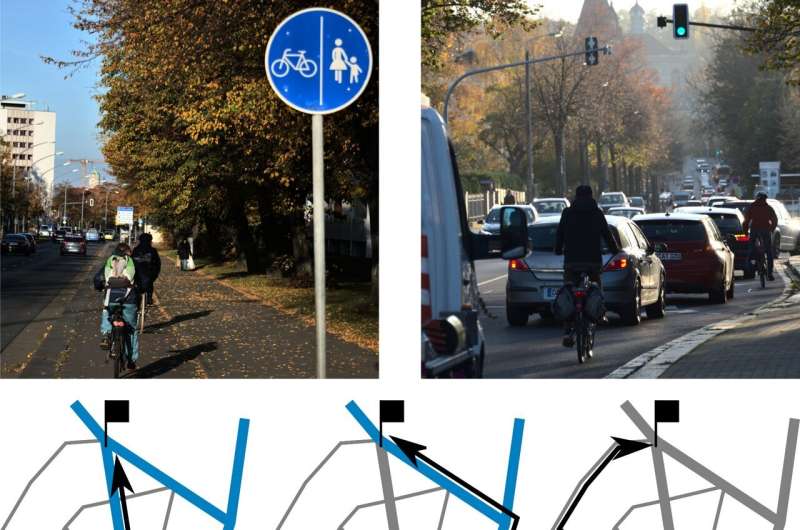Good planning gets the bike rolling: New approach to bicycle infrastructure planning

In surveys, a large majority of respondents usually agree that cycling can make a significant contribution to reducing greenhouse gases and to sustainable transport, especially in densely populated areas. In contrast, for many countries in reality there is a large gap between desired and actual numbers. In Germany, for example, only 20% of the short-distance of everyday trips in residential environments are covered by bicycle.
When asked about the reasons, one point repeatedly comes up top of the list: The perceived or actual lack of safety on the bike routes used. Increasing the share of cycling trips in the modal split thus depends crucially on a well-developed bike path infrastructure. However, designing efficient bike path networks is a complex problem that involves balancing a variety of constraints while meeting overall cycling demand. In addition, many municipalities still only have small budgets available for improving bicycle infrastructure.
In their study published in Nature Computational Science, researchers from the Chair of Network Dynamics / Center for Advancing Electronics Dresden (cfaed) at TU Dresden propose a new approach to generate efficient bike path networks. This explicitly considers the demand distribution and route choice of cyclists based on safety preferences. Typically, minimizing the travel distance is not the only goal, but aspects such as (perceived) safety or attractiveness of a route are also taken into account.
The starting point of this approach is a reversal of the usual planning process: Under real conditions, a bike path network is created by constantly adding bike paths to more streets. The scientists, on the contrary, start with an ideal, complete network, in which all streets in a city are equipped with a bike path.
In a virtual process, they gradually remove individual, less used bike path segments from this network. The route selection of the cyclists is continuously updated. Thus, a sequence of bike path networks is created that is always adapted to the current usage. Each stage of this sequence corresponds to a variant that could be implemented with less financial effort. In this way, city planners can select the version that fits their municipality's budget.
"In our study, we illustrate the applicability of this demand-driven planning scheme for dense urban areas of Dresden and Hamburg," explains Christoph Steinacker, first author of the study.
"We approach a real-life issue here using the theoretic toolbox of network dynamics. Our approach allows us to compare efficient bike path networks under different conditions. For example, it allows us to measure the influence of different demand distributions on the emerging network structures."
The proposed approach can thus provide a quantitative assessment of the structure of current and planned bike path networks and support demand-driven design of efficient infrastructures.
More information: Christoph Steinacker et al, Demand-driven design of bicycle infrastructure networks for improved urban bikeability, Nature Computational Science (2022). DOI: 10.1038/s43588-022-00318-w



















